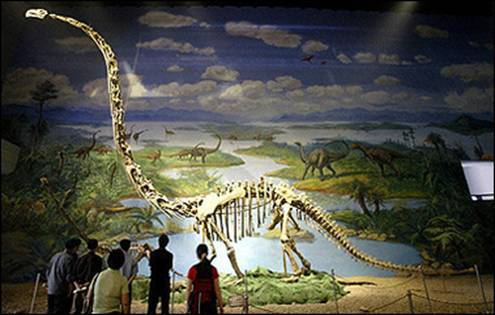Unaware that disappointment was going to be a continuing feature of his life, Mantell continued hunting for fossils—he found another giant, the Hylaeosaurus, in 1833—and purchasing others from quarrymen and farmers until he had probably the largest fossil collection in Britain. Mantell was an excellent doctor and equally gifted bone hunter, but he was unable to support both his talents. As his collecting mania grew, he neglected his medical practice. Soon fossils filled nearly the whole of his house in Brighton and consumed much of his income. Much of the rest went to underwriting the publication of books that few cared to own. Illustrations of the Geology of Sussex , published in 1827, sold only fifty copies and left him 300 pounds out of pocket—an uncomfortably substantial sum for the times.
曼特爾不知道失望會伴隨自己的一生,繼續尋找化石——1833年,他發現了另一個龐然大物雨蛙龍——并從采石場工人和農夫手里買回別的化石,最后很可能成了英國最大的化石收藏家。曼特爾是一位杰出的醫生,在搜集骨頭方面也同樣很有天賦,但他無法同時維持這兩方面的才能。隨著他越來越熱衷于搜集工作,他忽視了醫生職業。過不多久,他在布賴頓的家里幾乎塞滿了化石,花掉了大部分收入。剩下的錢被用來支付書的出版費用,而他的書又極少人愿意購買。1827年出版的《蘇塞克斯的地質說明》只賣掉了50本,很不開心地倒貼了300英鎊——這在當時是一筆不小的數目。

In some desperation Mantell hit on the idea of turning his house into a museum and charging admission, then belatedly realized that such a mercenary act would ruin his standing as a gentleman, not to mention as a scientist, and so he allowed people to visit the house for free. They came in their hundreds, week after week, disrupting both his practice and his home life. Eventually he was forced to sell most of his collection to pay off his debts. Soon after, his wife left him, taking their four children with her.
曼特爾在絕望之中靈機一動,把自己的房子改成了博物館,收取門票費。然而,他后來意識到這種商業行為會損害他的紳士地位,且不說科學家的地位——于是就讓別人免費參觀他的家庭博物館。成百上千的人前來參觀,一個星期又一個星期,既中斷了他的行醫工作,又擾亂了他的家庭生活。最后,為了償還債務,他不得不變賣絕大部分收藏品。過不多久,他的妻子帶著他的四個孩子離他而去。
Remarkably, his troubles were only just beginning.
值得注意的是,他的麻煩才剛剛開始。











